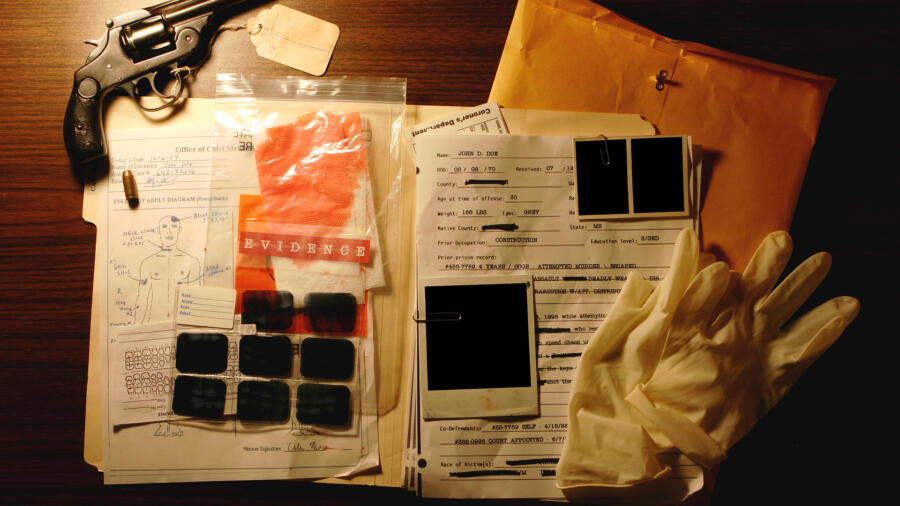Becoming obsessed with unsolved cases isn’t a hazard of the job, explains retired homicide detective Cloyd Steiger of the Seattle Police Department. It’s a core part of doing it well.
“You think about it all the time, until you clear it,” Steiger says. “Even when you’re not thinking about it, your mind’s constantly working it. If you go home every day, forget about it at 4 o’clock, have dinner with the kids and come back the next day—you belong in a precinct detective’s job, doing thefts. Because you’ll never get any big cases solved. You’ve got to think about it 24/7.”
But with the national homicide-clearance rate below 60 percent, the odds are good that eventually a detective—even an excellent one—will run into a dead end: The case that goes cold, that stays cold, that leaves a family grieving without justice and a lead detective grasping for answers, even years into retirement.
[Stream episodes of Cold Case Files on the A&E site and apps.]
For Steiger, the biggest case that got away from him was the murder of Tanya Frazier. Frazier was a 14-year-old girl who disappeared on her way home from summer school on a July afternoon in 1994. She was found five days later by a man walking his dog in the Washington Park Arboretum—naked and decomposing, throat slashed.
Evidence suggests Frazier’s body was dumped in the park from a car. And since the girl’s abduction happened midday in a densely populated part of the city without arousing any suspicion, Steiger assumes she knew her assailant.
“For a while they thought it might’ve been her stepfather… He wasn’t the father, but he was going with her mother. Mom’s boyfriend: it’s almost always that guy.”
But none of the DNA matched, leaving Steiger with only weak alternate theories. Now, even though it’s been more than two decades since the murder (and two years since his retirement from the police department), he’ll still occasionally contact Seattle cold-case detectives with new ideas, asking if they’d used the latest in forensic technology on the old collected evidence.
What makes leaving this case behind even more difficult than most, Steiger says, is that it’s a child who was killed.
[Watch The Case I Can’t Forget on A&E Crime Central.]
“I can look at a mutilated body with all the compassion of a mechanic looking at a broken transmission… I can do that, it doesn’t bother me. Except for kids.”
That notion—that some victims are particularly innocent, particularly undeserving of their fate—is what similarly haunts retired homicide detective David Griffin when he thinks about Carmen Nazario’s unsolved murder from 1988.
Griffin had just officially started working homicide for the Orlando Police Department that year when he got a 2:00 a.m. phone call directing him to Nazario’s apartment complex.
The 27-year-old had been stabbed to death. Her roommate—a friend of hers since junior high school—says she was also home at the time of the assault and caught a glimpse of the killer, describing him as “about 5 feet 9 inches, 150 pounds, with blonde hair.” But that sole eyewitness was also legally blind, and says she wasn’t wearing glasses at the time and so couldn’t provide a more comprehensive description.
“She had no enemies,” says Griffin. “She wasn’t dating anyone. She was just a well-liked girl… she was doing well. She had a new car. She was very close to her family.”
There were no signs of sexual assault at the crime scene, says Griffin, nor any indication that robbery had been a motivating factor.
“In so many of these murders, there’s reasons—they’re involved in drugs, they’re involved in some type of criminal activity or at the very least they’re at the wrong place at the wrong time. But Carmen was in her bed, sleeping.”
And despite a variety of leads—torn female fingernails on the carpet, a suspiciously curious male tenant with scratches on his face who aggressively solicited the police for information on the night of the killing—Griffin says they were never able to home in on a singular suspect.
“This one, it’s a steady thing. You think about it. There seemed to be a lot there, and then it just kind of dissipates, and you can’t find the reason why this innocent girl lying in bed was brutally murdered.”
So the case continues to sit with Griffin, unsettled, he says, even 18 years into his retirement. Recently the topic came up at a Fourth of July party, when he found himself schmoozing with a self-proclaimed psychic.
“She said that she’s had this ability since she was young, that she would see deceased people,” says Griffin.
“I called her one day and we discussed Carmen’s case. And she says she’s been in touch with Carmen.”
Ultimately, the psychic wasn’t able to bring meaningful new information to the case, Griffin says. Still, he approached the conversation with an open mind and an open heart.
“I don’t discount anything… The first question I asked her was, ‘Is she with her mother?’ Because that meant so much to me. And she said yes.”
Carmen Nazario’s mother, Ursula Nazario, was devastated by her daughter’s killing, a shock and stress that Griffin believes contributed to her own death decades later. Both Griffin and Steiger cite that pain—of the grieving mother—as a particularly salient form of heartbreak that they themselves carry in their cold cases, wishing there was something more they could’ve done to offer closure.
“There’s nothing worse that could happen in your life than a murdered child… especially an unsolved [case] like that,” says Steiger. “That’s purgatory is what that is.”
It’s a purgatory that spurred on Abel Alonzo, a detective for the Denver Police Department, even after he went into retirement.
When he turned in his badge and gun in 2005, Alonzo had already spent 10 years investigating the murder of Anna Mae Aquash, a Native American activist and member of the American Indian Movement (AIM), who was kidnapped in Denver in 1975 and found dead the following year on the Pine Ridge Indian Reservation of South Dakota. And yet he would work on it for the next several years as a retiree volunteer, traveling between Denver and South Dakota on his own dime in the hopes of putting the pieces of the murder together.
According to Alonzo, most of the hurdles involved in solving this case were around the international extradition of one suspect, John Graham—something he wasn’t involved in. But he kept tabs on the investigation and stayed in contact with Aquash’s family, working to make sure there would be some kind of closure for them.
A fellow member of AIM, Arlo Looking Cloud, was arrested in 2003, tried and convicted of Aquash’s murder in 2004, shortly before Alonzo’s retirement. Graham, also a member of AIM, was eventually extradited to the U.S. and found guilty of felony murder in 2010. Both received life sentences, though Looking Cloud later had his sentence reduced to 20 years after he agreed to testify for state prosecutors against Graham.
Prosecutors believed leaders in the movement thought Aquash was a government informant.
With the case closed, Alonzo remembers being called to South Dakota by Aquash’s family. As a means of moving on, they’d decided to take her remains from South Dakota to Nova Scotia, Canada, where she was from. Thirty years after the initial burial, her bones were dug up while family members stood by and solemnly watched.
“When they brought her out… an eagle flew right over her body and then flew off. There was total silence—nobody said anything about it. Finally, I said, ‘Did you see that eagle?’ They said, ‘That was Anna Mae’s spirit. She’s finally free.'”
Related Features:
Check Out New Episodes of Cold Case Files: The Podcast
The Austin Yogurt Shop Murders Cold Case: Revisiting the Scene of the Crime More Than 25 Years Later
What Makes a Good Homicide Investigator?


